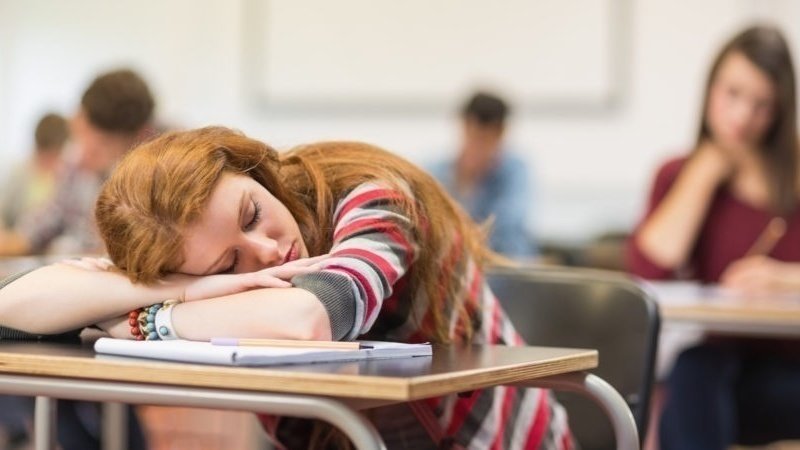Nitros, can you remember the last time that you got your recommended 8-10 hours of sleep on a school night? Yeah, me neither.
High schoolers are expected to take challenging classes, excel at sports, run several clubs, have after-school hobbies AND get at least seven hours of sleep every night? There are only 24 hours in a day, yet our schedules are loaded with over a day’s worth of activities on the daily. A disruption to their regular sleep schedule is a sacrifice that all high schoolers have had to make.
Seeing students asleep at their desks, sometimes right in the middle of a teacher’s instruction time, is such a common occurrence, that many teachers don’t bother to fight it anymore.
We are tired.
Now, if only there was a way to regain some of that sleep…
Children nap regularly from the day they are born, up until they are about five years old. According to the Sleep Foundation, children transition out of napping once a full night’s rest gives them enough energy to carry out their daily activities. But what about when activities increase in rigor to the point where a full night’s rest is unattainable?
Sleep deprivation, or not getting the required amount of sleep, has proven to have many negative effects on teenagers, including the inability to concentrate, a difficulty in processing complex information, anxiety, and depression. It is a vicious cycle of students having too much work to do, which keeps them from getting enough sleep, which leads to a poorer performance on their work, causing them to spend more time on it, which means they get even less sleep than before.
Now you may say that teens should just go to bed earlier at night, but this is not as easy a solution as it first seems. Even if students have less work to complete every night, a teen’s melatonin, or sleep hormone, is not produced in the teenage body until 11:00 PM. Combined with early school start times, this simply does not allow a teen to get eight hours of sleep each night.
School districts in California have attempted to remedy this problem by implementing a later start time. Yet many students deal with a long commute to school, meaning later start times do not significantly improve the situation.
So what is the solution to our sleep deprivation?

A designated nap time during the school day!
Studies have shown that 30-60 minutes of nap time during the day can help students with neurocognitive functioning tasks, such as remembering, reasoning, and problem solving. An increase in sleep also results in happier teens. In other words, it is very likely that a student’s learning experience will be greatly enhanced by simply taking a nap.
It’s true that nap time would take away from our regular instructional time during the school day. However, if students are able to function better emotionally and academically after nap time, it will take them less time to retain the information being taught. Students fall asleep in class with or without designated nap times, so why not give us the rest we so desperately need?
Of course, schools cannot force teens to take a nap, but if they are provided with the option to get some shut-eye, many students will take it. In order to provide students with this opportunity, sleeping pods or sleep stations will have to be installed in a somewhat quieter area of the school. It’s a good thing GHS has many classrooms to spare!
In fact, these sleeping rooms have also been installed in the offices of major corporations, such as Google and Nike, who require top-notch performance from their workers. If nap times have been proven to work, why not apply their benefits to struggling teenagers who are so badly craving sleep?
In the end, there are only 24 hours in a day. Sleeping an extra 30 minutes won’t harm anyone, but it will make countless students happier and more productive.
Let’s find ways to stay restful, Nitros!












